Running with rainfall-where does the rain go?
Simply put, stormwater runoff is created from rain and snowmelt that flows over land without soaking into the ground. Remember, water flowing into storm drains is NOT filtered! Pollutants created by our actions on land flow down storm drains and directly into our local streams, creeks, and the saltwater bay. Learn more about stormwater runoff.
Picture what Whatcom County looked like before our cities and towns were built.

Old-growth forests.
A wide Nooksack River valley carved by a wild river meandering and flooding her banks. Cobbled and sandy beaches.
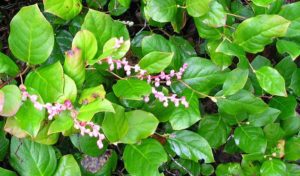
Creeks lined with and forest floors covered in native plants like Salal and mosses.
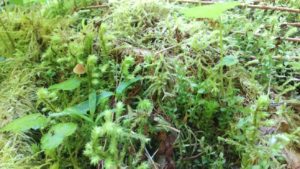
All of these are important to the ecosystem because these plants and landforms absorb rainfall and slow the flow of rainwater. It might take a single raindrop 24 hours to reach the ground from the top of a tree in the forest! Plants, mulch, soil, gravel, gardens, and grass are examples of pervious surfaces. Pervious surfaces allow water to soak into the ground reducing the amount of water and pollutants flowing into storm drains.
How many inches of rain does Whatcom County receive per year, on average? Keep reading on to find out.
Here is a photo of downtown Bellingham. What do you notice about the landscape? Does it look different than the images before the town existed? In what ways?
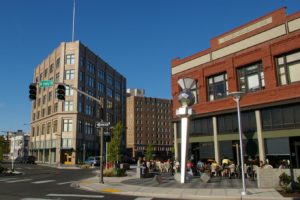
Most of the surfaces in the photo are paved, buildings stand several stories high, cars drive along the streets, and trees are few and far between. What is important to notice is that when the 35-40 inches of rain each year fall onto brick buildings, concrete sidewalks, paved streets, and parking lots, the water rushes down into storm drains or into creeks, rivers, and the Salish Sea. Any pollutants on these surfaces also go directly into these waterways. ANY. So when our cars leak oil and it rains, that oil ends up in the water. When we pour out the rest of our soda on the street, that ends up in the water. When we wash our car in the driveway the excess soap ends up … yup, in the water.
We only want rain down the drain!
Concrete, asphalt, brick, and stone are examples of impervious surfaces. Impervious surfaces do not allow water to soak into the ground, but instead, increase the speed of water and pollutants into storm drains.
Watch this video to learn how this stormwater impacts the Salish Sea and the animals and plants that live in the water. Write down at least 3 things you learned from the video.
Now, let’s check out some different ways to reduce stormwater runoff:
All of the following help slow the flow of rainwater and reduce stormwater runoff pollutants!
- Rain gardens use pervious surfaces such as mulch and native plants that absorb water and pollutants. They might have a raised storm drain (shown in the photo) that will trap litter from entering the storm drain.
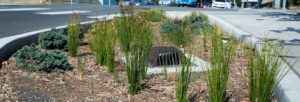
- Native Plant gardens use plants that grow in our region that help soak up rainfall

- Semi-pervious concrete allows some water to percolate through the surface. In the below image, the back parking is impervious asphalt and all of the water runs off, but the front portion below the words is a porous concrete that allows some water to flow through the surface.

Take Action
Take a stormwater walk to see for yourself!
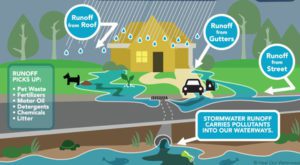
How do you think rainwater and stormwater move in your neighborhood? Take a stormwater walk and find out! Take a picture or video of what you discover on your stormwater walk and send them to us or tag us on Instagram (@resources_protects)!
Continue Learning!
There are lots of topics for you to choose from. Don’t stop here; move on to discover another lesson! New lessons uploaded each week.
